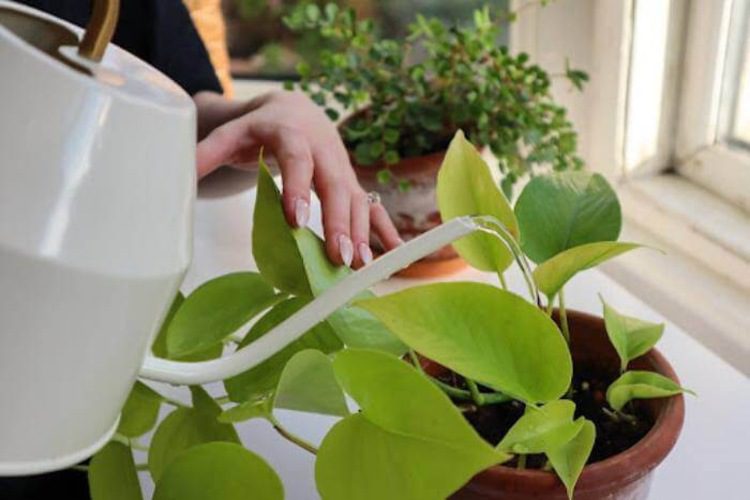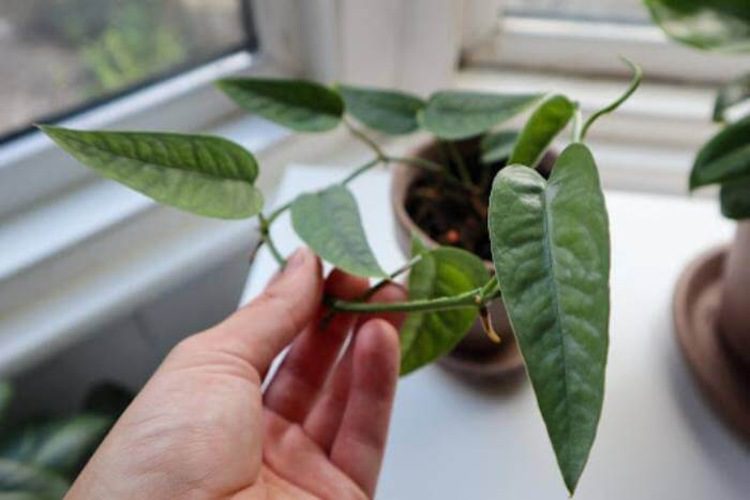How To Make Pothos Fuller? 5 Easy Ways

How do I make pothos grow densely? If your pothos plant is looking a bit forlorn, fear not! These hardy houseplants are easy to revive with some basic care and maintenance.
Pothos plants make an excellent addition to any home; their trailing foliage can add a touch of the tropics while being relatively low-maintenance, whether in hanging baskets or as part of vertical gardens. If you want your beloved pothos greenery to be fuller again, don’t despair: here’s how you get it back on track.
Is It Easy To Grow Bushy, Full Pothos?
Yes, Pothos make a great addition to any home; they may be easy enough even for novice gardeners! The lush foliage of these plants is surprisingly resilient, withstanding years of minimal care. But if you’re looking to spice up their look, why not train the vines along curtain rods or door jams? It’s an effortless way to create your own mini-jungle inside. And just like that—using nothing but some water, pruning shears, and potting soil—suddenly, one houseplant has become many.
Keeping your pothos’ soil hydrated is essential to maintaining their pristine health. You can achieve this by allowing some time between waterings for the soil to dry out while creating a more humid environment during the winter months. Simply bottom water your Pothos by placing the pot in a container filled with water and letting it sit for 30 minutes to an hour. This will allow the roots to absorb as much water as they need without overwatering the plant.
Bring a touch of the jungle into your home by growing pothos on shelves, hanging baskets, and other surfaces to create an awe-inspiring cascading effect. Bushy varieties are perfect for desks or tabletops, while longer vines can be trained across windows and doors—just make sure you secure them in place so that they stay upright.

How To Encourage A Pothos To Grow Fuller?
Pothos, with its green-rich foliage and trailing vines, has other beautiful names like Money Plant or Silver Vine. However, you might have to dedicate some effort and get to know some tips to make this plant as full as it should be.
When you are ready to whip your pothos into shape and unlock their full potential with these five methods, watch them flourish! Whether you use one or all of them, the luscious growth will be sure to impress.
Prune pothos regularly
Ensure your plant stays looking its best by periodically pruning it! Planting cuttings during the warmer months when plants are in their most active growth period is ideal, as this increases the chances of stimulating new growth. Forgo any winter snipping; leave that to Mother Nature and her icy weather.
Using sharp, sterile scissors or pruners ensures that you don’t stress the leggy vines too much. Plus, removing up to ⅓ of growth at a time is not recommended. Prune above a leaf node so the stem remains intact and doesn’t cut between two nodes. You can also propagate new plants from available pothos cuttings for even more greenery around your home.
Fertilize
Need some extra oomph in your pothos plant’s growth? Give them a nutrient boost by adding fertilizer, and watch their vibrant, lush foliage flourish! Plus, if you’ve been navigating the same pot for years, now’s the time to make sure they get everything they need.
Unlock the potential of your plants by fertilizing with compost or liquid seaweed solution at least twice a month; you’ll be amazed at how lush and full their foliage will become.
- For a solid fertilizer, simply sprinkle it on top and work it in lightly – then quench your garden’s thirst with some water.
- For liquid fertilizer, mix it with water in a watering can and then slowly pour it into the soil like you would when simply providing hydration. Diluting to half strength is important so as not to scorch your greenery.
More indirect sun
Pothos plants are like most living things—they need ample sunlight to really reach their potential! Those kept in well-lit areas will have a lush, green appearance as the number of leaves per node is maximised.
Conversely, if left in shadows and dark corners where light can’t penetrate fully, it won’t grow at its maximum capacity, resulting in fewer leaf nodes stretched further apart, creating a leggy Pothos plant and an undesired thin look.
Pothos offer a touch of greenery to any living space, but be careful when placing them; direct sunlight can cause burning, and your plants won’t flourish. Find a cozy spot for them near an east, south, or west-facing window; this will provide the perfect balance of rays and indirect warmth from nearby sunshine without any risk of overexposure.

Well watered
With its telltale curled leaves and browned edges, dehydration is an unmistakable sign that your pothos plant needs some TLC. Create a regular watering schedule to give your greenery the best chance of recovery. To help them look fuller and stay healthy for longer, don’t forget to remove any damaged foliage from the pot.
Caring for pothos plants requires attentiveness and a precise watering schedule. Too much water can be detrimental to these hardy houseplants, so take care when using your watering can; only do so after the soil has dried out completely between sessions!
A little love goes a long way towards helping you keep your green friends healthy and thriving. If you’re not sure if your soil is dry, try the simple sticky test! Gently touch it and press with your fingers. If there’s still moisture, wait until the wetness dissipates before giving your plant some water.
Right temperature
Pothos plants thrive in temperatures that range from 65 to 85°F (19 to 29°C). If they encounter temperature stress, their leaves will become limp and shrivelled. Too much sun or heat can even cause leaf burn—a definite setback for lushness.
Pothos is a great starter plant, and with just some simple pruning and attention to its environment’s needs, you can watch it fill out over time. With consistent effort comes reward—if cared for properly, your bushy vine will soon be flourishing in all its green glory!
Latest Video:
Conclusion
Caring for a Pothos fuller is not overwhelming; with some time, love, and the right know-how, it can be quite simple. We have outlined everything you need to do so you can have a bushier plant.
FAQs
Related post:









